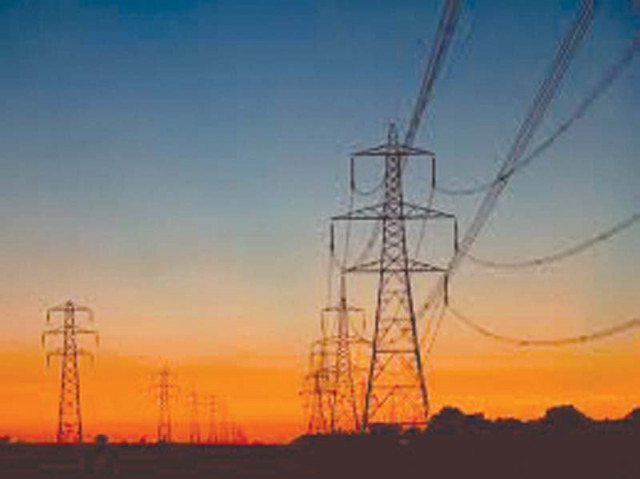Use of RLNG by K-Electric to cost Rs18 billion
End-consumers will pay some of additional cost; govt will bear the rest

K-Electric has said that enhanced use of re-gasified liquefied natural gas (RLNG) to meet growing demand for power from the city of ports during the summer season will cost an additional Rs18 billion during March-September and consumers will partially share the cost.
Besides, the company has decided to provide maximum possible relief to its consumers during Ramazan, but it would strictly follow its policy of intentional load-shedding of up to seven hours a day in 25% areas in the city, said K-Electric CEO Syed Moonis Abdullah Alvi.
The company resorts to intentional load-shedding in some areas due to low recovery of monthly billing from those parts, it has been learnt.
At a press conference on Thursday, K-Electric Chief Financial Officer Muhammad Aamir Ghaziani said that the use of expensive gas would additionally cost Rs2 per unit, totalling Rs18 billion during March-September 2021.
“However, the end-consumers will pay only Rs0.3 per unit,” he said. “The remaining cost of Rs1.7 per unit will be paid by the government.”
The government would finance the cost either through subsidy or by compromising its revenue from the power firm, it was learnt.
The power company receives imported gas from Sui Southern Gas Company (SSGC) in the wake of a notable drop in supplies of locally produced gas from fields.
“Imported gas costs double at around Rs1,200 per mmbtu (million British thermal units) compared to local gas, which costs Rs600 per mmbtu,” Alvi said.
“The inflated cost is feared to impact the flow of our working capital. We may require government subsidy to cope with the situation,” he said.
Chief Marketing and Communications Officer Sadia Dada elaborated that the power firm was supposed to receive a total of 190 million cubic feet per day (mmcfd) of gas from SSGC through a mix of 130 mmcfd of local gas and 60 mmcfd of RLNG.
However, it is being supplied 130 mmcfd of RLNG and 60 mmcfd of indigenous gas.
“We are trying to complete all the maintenance work before the start of Ramazan in mid-April,” she said.
According to her, this will help consumers as they will face announced load-shedding for maintenance purposes during the holy month.
Besides, the company has chalked out a policy of no load-shedding during Sehr and Iftar timings in Ramazan.
It will, however, stick to its policy of intentional load-shedding of up to seven hours a day in about 25% areas in the city during the holy month.
She said that currently 75% of areas in Karachi were free from load-shedding compared to 24% at the time of its privatisation in 2005. “We are aiming to make 93% of the city free from load-shedding by 2023.”
“If you expect K-Electric to pay markup money (worth Rs150 billion) against its liabilities… it would make K-Electric unsustainable,” Alvi said while replying to a question.
Talking about K-Electric’s forthcoming projects, the CEO hoped that his company would soon sign agreements with the state-owned Pakistan LNG Limited (PLL) to get additional supply of 150 mmcfd of gas from SSGC’s network. “PLL and SSGC will sign separate agreements for supplies,” he said.
He said that year-long negotiations among different entities and the government for the supply of additional gas to K-Electric had concluded successfully and agreements might be signed very soon.
New supplies would enable the power firm to kickstart an RLNG-fired new unit of 450 megawatts sometime during the peak summer season around June, he said.
Besides, the company drew additional supplies of 450 megawatts from the national grid system for the first time on Thursday.
Earlier in January, K-Electric had announced a total of 900 megawatts in its system ahead of the summer season, including 450 megawatts from the national grid and another 450 megawatts from a new RLNG unit.
He said K-Electric had improved power supply infrastructure, which was now capable of distributing almost 6,000MW in the city.
The demand, however, remained almost half of the system capacity at present.
“The demand may hit the peak of 4,000MW for about a couple of hours this summer,” he said.
Dada added that the company had a total of 3,000MW in the system at present, including from its own power plants, national grid system and independent power producers (IPPs).
“There is no gap between expected high demand and supplies of power in the system considering the usual load-shedding for about seven hours a day in some of the areas in the city,” she said.



















COMMENTS
Comments are moderated and generally will be posted if they are on-topic and not abusive.
For more information, please see our Comments FAQ